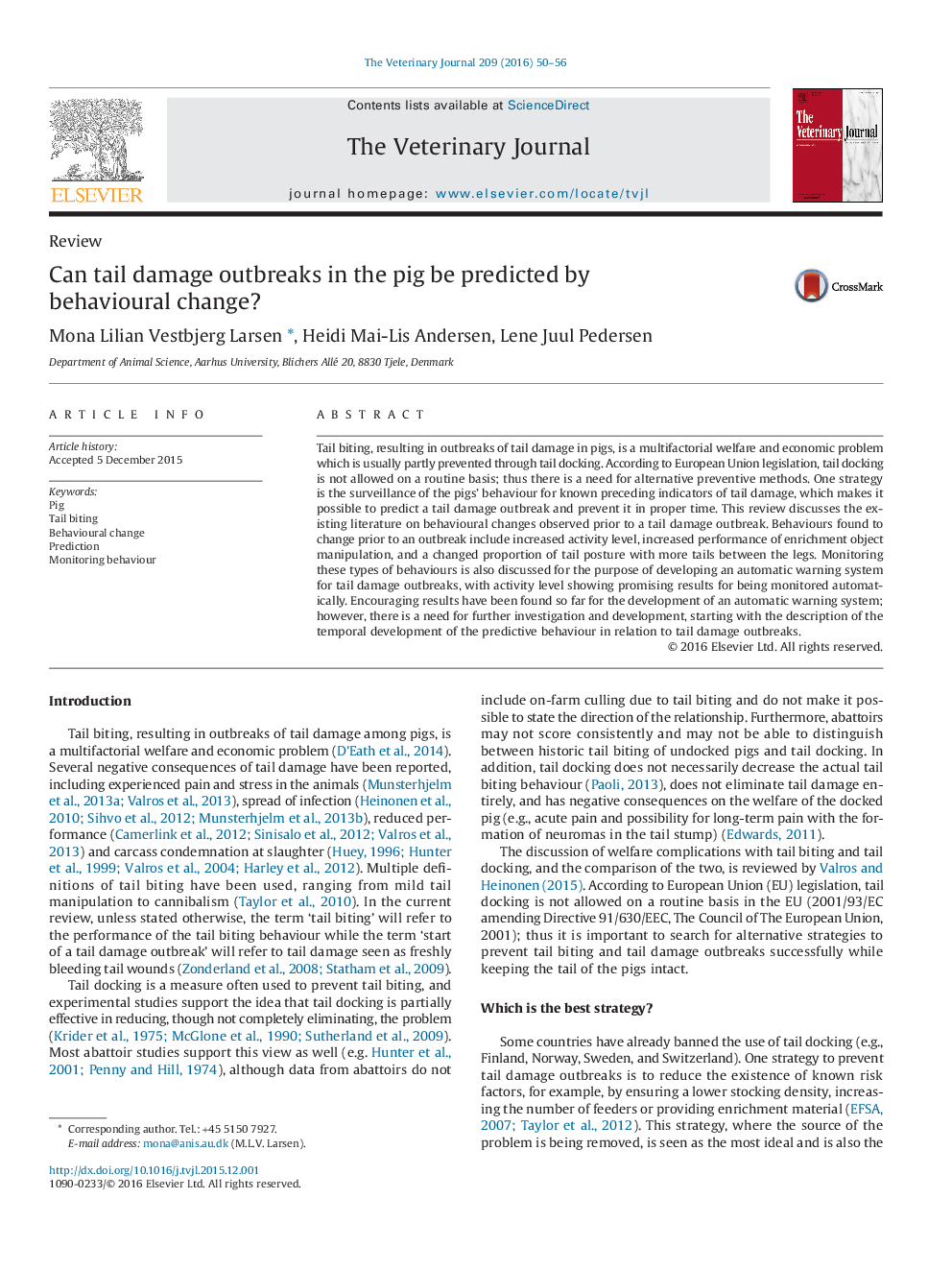| Article ID | Journal | Published Year | Pages | File Type |
|---|---|---|---|---|
| 5797322 | The Veterinary Journal | 2016 | 7 Pages |
â¢Review of the existing literature on behavioural changes prior to tail damage outbreaks.â¢Investigate behavioural changes that can predict tail damage in pigs.â¢Activity level, exploration and tail posture identified as promising indicators.â¢Further investigations required to develop appropriate monitoring tool.
Tail biting, resulting in outbreaks of tail damage in pigs, is a multifactorial welfare and economic problem which is usually partly prevented through tail docking. According to European Union legislation, tail docking is not allowed on a routine basis; thus there is a need for alternative preventive methods. One strategy is the surveillance of the pigs' behaviour for known preceding indicators of tail damage, which makes it possible to predict a tail damage outbreak and prevent it in proper time. This review discusses the existing literature on behavioural changes observed prior to a tail damage outbreak. Behaviours found to change prior to an outbreak include increased activity level, increased performance of enrichment object manipulation, and a changed proportion of tail posture with more tails between the legs. Monitoring these types of behaviours is also discussed for the purpose of developing an automatic warning system for tail damage outbreaks, with activity level showing promising results for being monitored automatically. Encouraging results have been found so far for the development of an automatic warning system; however, there is a need for further investigation and development, starting with the description of the temporal development of the predictive behaviour in relation to tail damage outbreaks.
